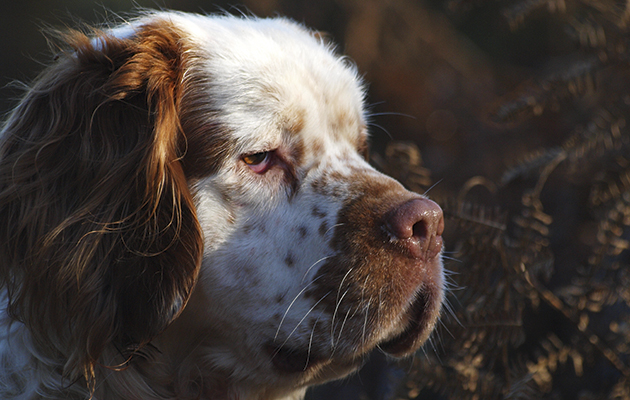It is hard to know whether gundog coat colour actually matters. David Tomlinson is less than enthralled by some selectively bred shades.
Gundog coat colour is crucial to some when it comes to choosing a suitable gundog. Chocolate labradors have only recently rectified their reputation as being lazy and overweight and are slowly being recognised as hard working and atheltic. But does colour really tell on the field? David Tomlinson gives his opinion below. And once you have decided on colour of you favoured breed the next questions is should your gundog live in or out?
DOES GUNDOG COAT COLOUR MATTER?
A trialling friend assures me that the fashion for nearly white springers has passed and that there’s now a trend to bring back more traditionally marked dogs. I have bred a few litters of springers and it’s been notable that all buyers – both pet and working – have preferred well-marked puppies. My springers are invariably born sharply black and white but black hairs soon invade the white, leading to spots and dappling that in a cocker would be called roan.
Springers are permitted three colours only: black and white, liver and white or tricolour. In contrast, cockers can come in almost any colour you can think of, from solid black, brown or gold all the way through to lemon and white or orange roan. Such variety makes breeding cockers great fun; you can never be sure what colours you’ll get. Solid black is currently the fashionable colour for working cockers but this could change in a few years.
Look at the Victorian paintings of clumbers and it’s evident that these spaniels, apart from being half the size of their modern descendants, were also attractively marked with lemon or orange. Selective breeding for the showring has largely abolished any colour at all, though I’m delighted to note that working clumber enthusiasts have successfully reintroduced it.
One of the traps for the unwary is describing a gundog coat colour correctly. Put the word golden in front of lab and you instantly expose your lack of knowledge of the breed. You can just about get away with calling a liver-and-white springer brown and white, but a German longhaired pointer is always brown, never liver. English setters are similarly confusing. A black-and-white dog, for example, is called a blue belton, while there’s also lemon belton and liver belton, plus tricolour.
The chesapeake is the only breed of gundog that comes naturally camouflaged. The breed standard suggests that the gundog coat colour should be “dead grass (straw to bracken), sedge (red gold), any shade of brown, or ash”. They are perfect colours for a ’fowling dog. However, should you want to take your pale-yellow lab or cream golden retriever shooting, you could buy it a Realtree-patterned neoprene coat, proving that no dog can really be a bad colour, at least for a shooting man.






